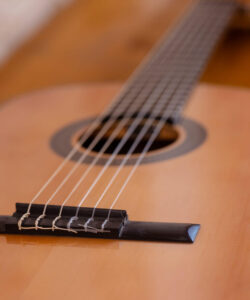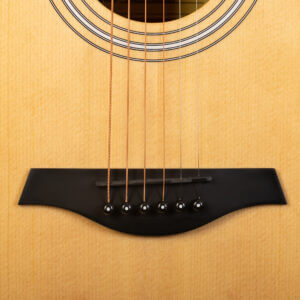The story of classical guitars: from old times to present
Classical guitar, as a musical instrument, has a long history that spans several centuries. It is a descendant of ancient string instruments such as the lute and vihuela, which were used in Europe during the Middle Ages and the Renaissance. However, the term “classical guitar” in the modern sense is usually associated with instruments that evolved during the 19th and 20th centuries. The form and construction of the classical guitar, as we know it today, solidified in Spain in the 19th century. This period saw intensive creativity from master guitar makers such as Antonio Torres and Enrique de Tomas, who significantly influenced the instrument’s development.
Thus, while the roots of the classical guitar trace deep into the past, its modern form and structure, as well as the term “classical guitar,” acquired their contemporary essence in the 19th and 20th centuries, especially in Spain.
Acoustic guitars: echoes of the past, sounds of today
The acoustic guitar, as a musical instrument, also has an ancient history. Starting with the appearance of ancient string instruments such as the lute and vihuela, the acoustic guitar evolved over many centuries. However, in the modern sense, the term “acoustic guitar” is usually associated with instruments used in popular music, folk, and other genres since the early 20th century. This period coincides with the development of mass-produced guitars and the use of steel strings. Early acoustic guitars with metal strings became popular among performers in genres like blues, jazz, and country. Examples include guitars from the Martin company in the USA. Thus, while the concept of the acoustic guitar has its roots in ancient times, modern acoustic guitars, as we know them, began to take shape in the early 20th century with the development of new technologies and changes in musical preferences.
Choosing between classical and acoustic guitar
Here are a few important things to keep in mind when choosing between a classical and acoustic guitar:
1. Music genre:
• Classical guitar: If you are drawn to playing classical music, flamenco, or fingerstyle, a classical guitar with nylon strings may be the ideal choice.
• Acoustic guitar: If you prefer popular, rock, country, or folk compositions, an acoustic guitar with steel strings may better suit your needs.
2. String type:
• Classical guitar: Nylon strings on classical guitars are gentle on the fingers, making them comfortable for beginners and suitable for fingerstyle playing.

Nylon strings on classical guitars provide a comfortable feel for those just starting out.
• Acoustic guitar: Steel strings on acoustic guitars require more force when playing, but they provide a brighter and more projecting sound to the instrument.

Steel strings on acoustic guitars deliver a more vibrant and bright sound.
3. Shape and size of guitars:
• Classical guitars come in three sizes: 1/2, 3/4, and 4/4. There is also a size 1/4 – the smallest guitar suitable for preschool-age children. The 3/4-sized guitar is designed for younger and middle-aged players. The 4/4 size is a full standard guitar intended for middle-grade music school and concert performance. Additionally, there is an intermediate size between 3/4 and 4/4 – 7/8, a slightly reduced version of the classical guitar suitable for teenagers aged 12-13 and adults of shorter stature.
• Acoustic guitars have a more massive body and various shapes: Dreadnought, Folk, Jumbo, and Grand Auditorium and others.

ROCKDALE offers various shapes of acoustic guitars for learning and creative process.
4. Playing technique:
• Classical Guitar: Playing the classical guitar is an art form that leans heavily on intricate fingerpicking techniques. Musicians typically use their fingers to pluck the nylon strings. The wider neck of classical guitars accommodates precise finger movements, enabling players to execute complex arpeggios, scales, and melodic lines with finesse. The nylon strings provide a warm and mellow tone, contributing to the instrument’s suitability for classical music and genres requiring intricate fingerstyle playing.
• Acoustic Guitar: In contrast, playing the acoustic guitar involves a more diverse set of techniques. Musicians employ a range of methods, including strumming chords, picking arpeggios, and executing expressive bends. The steel strings of acoustic guitars add brightness and projection to the sound, making them well-suited for genres like folk, rock, country, and pop. The versatility of playing styles on the acoustic guitar allows for dynamic performances, from energetic strumming to delicate fingerpicking.
5. Budget:
• Classical guitar: In general, classical guitars are often more budget-friendly, which can be important for beginners.
• Acoustic guitar: Acoustic guitars can have a wider price range, depending on the brand, materials, and craftsmanship.
Remember that experience and comfort in playing also play a crucial role. It’s best to test different instruments before making a purchase and choose the one that feels enjoyable and aligns with your musical goals.